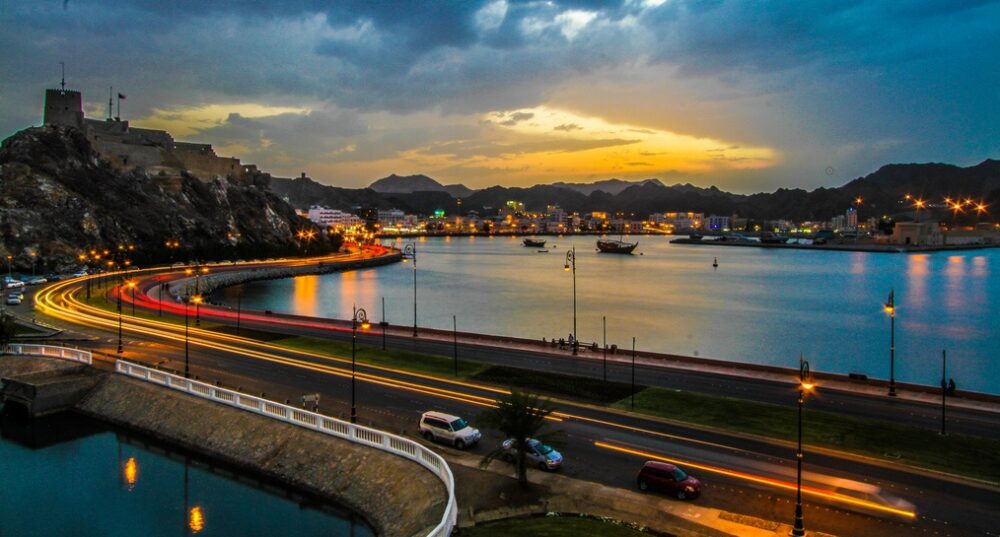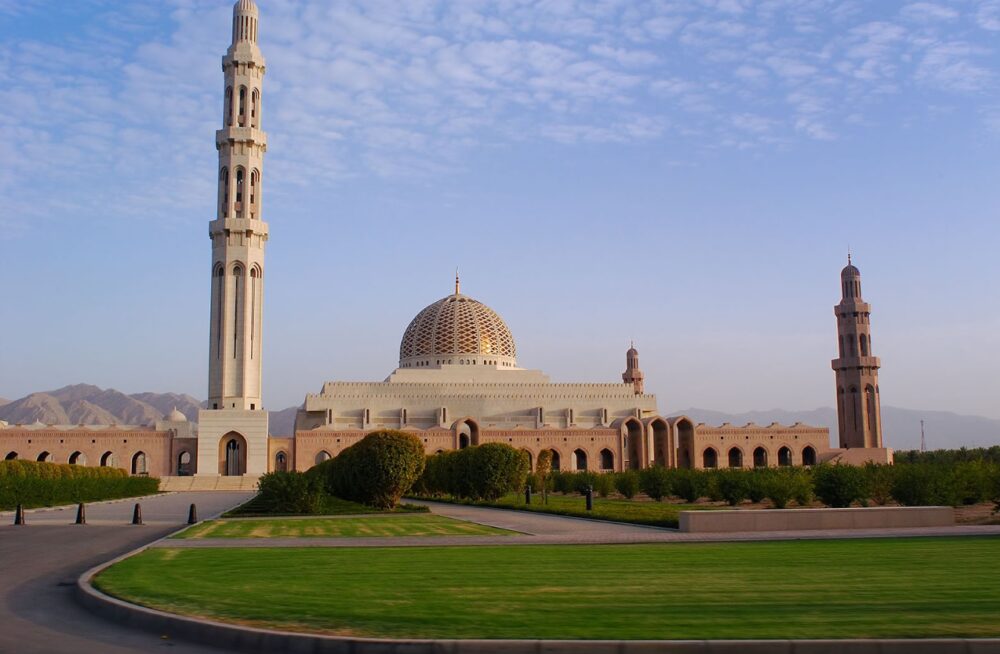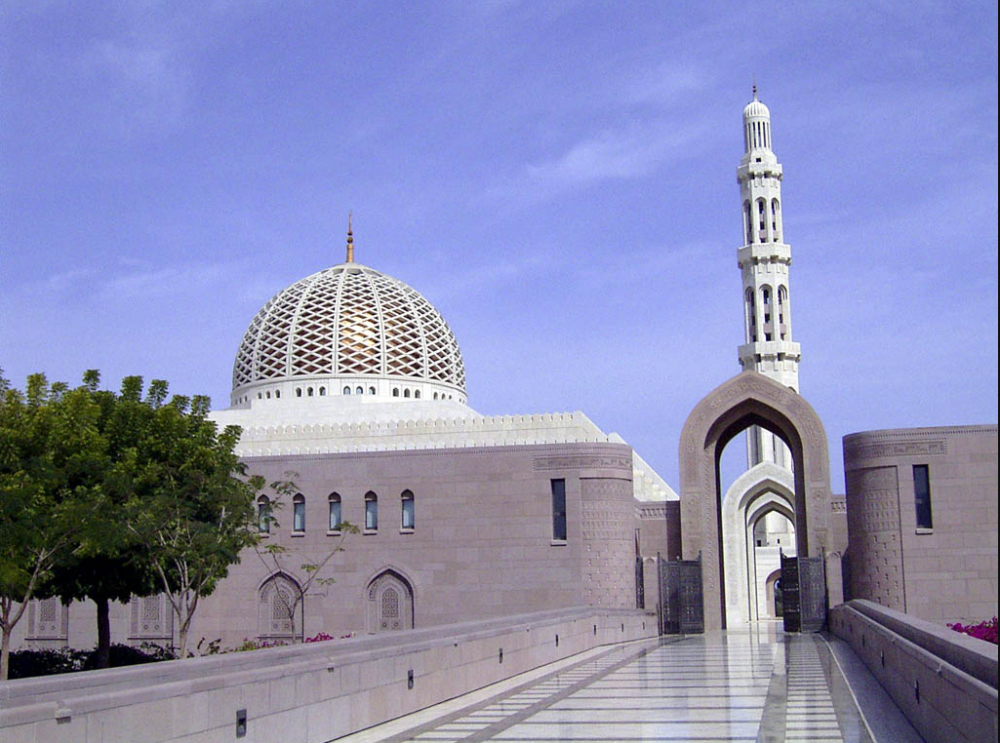Capital City of Oman
The capital of Oman , Muscat , Muscat in Spanish, has everything one expects when arriving in an Arab country but, at the same time, much more. We realized it just after getting off the plane on our trip to Omanand riding in the car that would take us to Mutrah – a district of the Muscat metropolitan area – motorwaysin perfect condition, lavish buildings, decorative lighting – in addition to lampposts Of the highway – … giving way to old houses with French air, narrow streets and the souk. Not to mention museums, shopping centers,
The first “thing” to see are the Omanis themselves and their clothes . The clothing, despite the ostentatious buildings and expensive cars, is still the traditional: white dishdashas – you will also see them in other pastel colors but, let’s not fool ourselves, white is the best option – for them and long and wide dresses with the headscarf -lihaf- for them. If you wonder what men wear under the dishdashas , the answer is a kind of pareo skirt . If the next question you ask is if you lose some of the elegance when sitting, do not:

Interesting facts about Muscat
THE MOSQUE OF SULTAN QABOOS
Our first contact with the great mosque of Sultan Qaboos – the current Sultan of the Sultanate of Oman – was overnight on the way from the airport to Mutrah. The lighting surprised us by its elegance: no strident colors as we had seen in other mosques in other countries.
The next day we approached there and discovered a luxurious mosque with details such as polished Carraramarble, air conditioning in the interior fully integrated with the walls, ceramic drawings in the columns recalling the traditions of Islam … but all with exquisite taste. It was inaugurated in 2001 and the whole complex covers an area of 416,000 square meters!
Special mention should be made of the 74.4-meter side prayer room . In the center, a gigantic chandelier – we were told to be the largest in the world – with gold trim . Around it “orbit” smaller ones in what appears to be a formation of spaceships around the mothership. And a gigantic Persian carpet – we were also told that the largest in the world in one piece, 4,343 square meters – woven in Iran covering the ground.
As a place of worship that is, access to tourists is limited to certain hours of the day, specifically from 8.00 to 11.00 . In fact this is the only mosque in the country that can enter non-practitioners. It is not possible to enter without proper dressing : women should cover their heads, arms and legs and men arms and legs. If you do not have a rag with which to cover or there is no way to do it, you can ask for a kind of chilaba in the entrance.

At the end of the walk do not forget to enter the “indoctrination” room where volunteers serve water and sweets to the visitors while explaining the benefits of Islam, black dress and the Sultan himself.
THE MUSCAT ROYAL OPERA HOUSE, THE MUSCAT OPERA HOUSE
If good taste reigned in the mosque, in the complex of the Muscat Opera House , on the other side of the highway, too. Although it has to be said that the decor is rather more ornate , with marble floors and columns with geometric designs, wooden ceilings, oriental lamps … The first word that came to the mint just entering was ostentation. Well, actually it was the second, the first was thank you because the indoor air conditioning took us to paradise from the scorching sun and the forty degrees of the street.
Do you want to know about Capital City of Norway?
The entrance (3 OMR) includes a guided tour – in English – that runs through the main areas of the building to the patio of armchairs. As you are, pay a visit to the toilets before you leave.
The complex of the Muscat Opera House includes, in addition to the building itself, shopping malls , restaurants and a gigantic covered parking lot.
THE OLD CITY OF MUSCAT
Go ahead that Old Muscat, the old Muscat , is not the most scenic area of the city. Yes that is the oldest part but there is little without restoration and, the majority, are new buildings.
THE AL ALAM PALACE, THE PALACE OF SULTAN QABOOS
The Al Alam Palace is the ceremonial residence of Sultan Qaboos . It is not possible to visit it, you can only admire its facade from the fence with the shield of the Sultanate. It is an old palace with more than two centuries of history that was built by the great-great-grandfather-seven generations of the Sultan.
The Al Alam Palace is surrounded and protected by the Mirani and Jalail forts , built in the 16th century by the Portuguese. Two of Oman’s more than 500 castles and forts .

BAIT AL ZUBAIR, THE MUSEUM OF TRADITIONS
The Bait Al Zubair Museum is an approach to Omani traditions , especially those that are related to dress. Here is where we discover how the subtle differences in the position of the scented cord – if there is no cord in the dishadasha is not an omaní but of someone of a neighboring country -, in the seams of the dishdashasindicate the origin of its carriers Or in the embroidery and colors of kummas – the small caps with which they cover the head – and musars – disturbing. Also the different types of veils still used today by women in other parts of Oman.
It opens every day except on Fridays with a schedule of 9.00 a.m. to 6.00 p.m.- during Ramadan the schedules can vary and the entrance price is 2 OMR.
MUTRAH, THE MUSCAT MOST ALIVE
Mutrah is the district in which Muscat lives . Here are the old French-style houses , the small, narrow streets that disorient you and love you in equal parts, the souk, the seafront known as the Corniche, the portof the Sultan … A place to stroll and to discover, to enter In one of their restaurants to eat or have a lemonade with mint – the shakes are also very rich.
When did we visit it for the first time? Right in the central hours of the day. Mutrah appeared before us almost like a ghost town in which the decay of its old buildings took to us to think in an abandoned place while we walked some of its narrow streets.
Everything changed – well, the decadence continued – after 18.00 – say that life comes back at 16.30, but comes back very slowly – people took to the streets, the terraces of the cafes were filled, the stalls opened … Another city, this time much more alive , appeared before our eyes.











